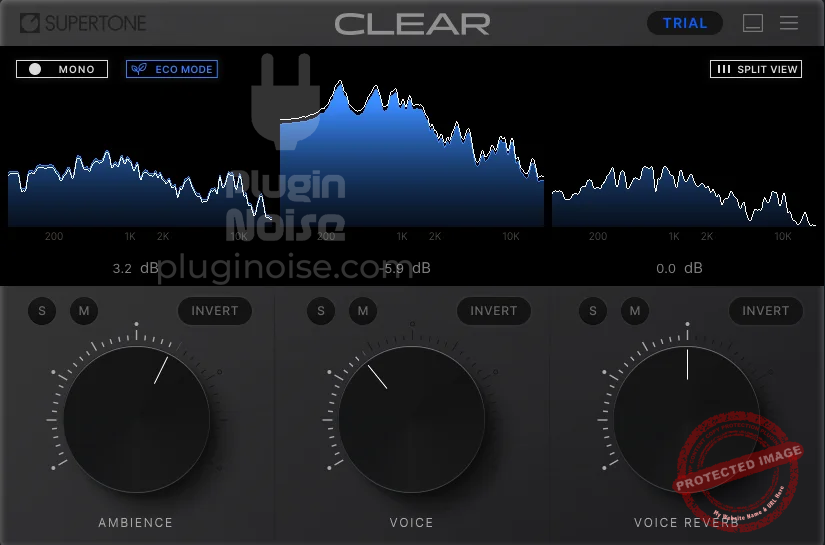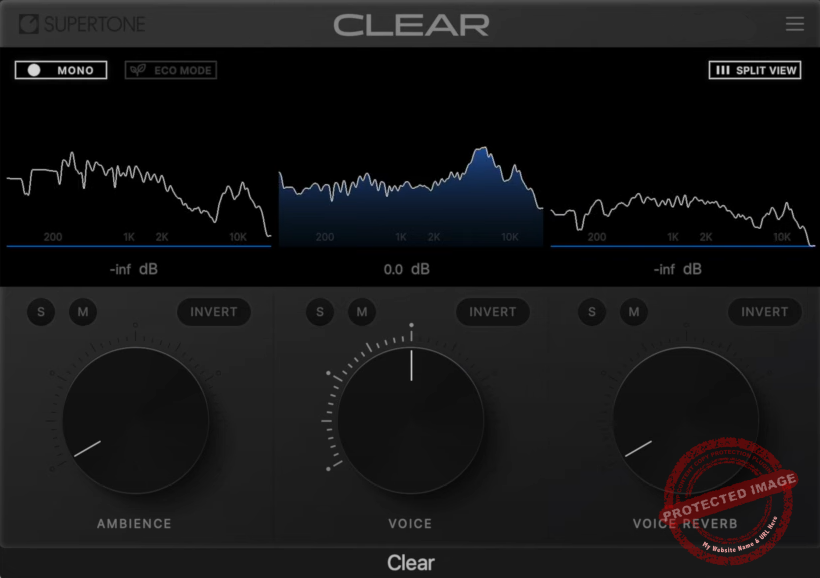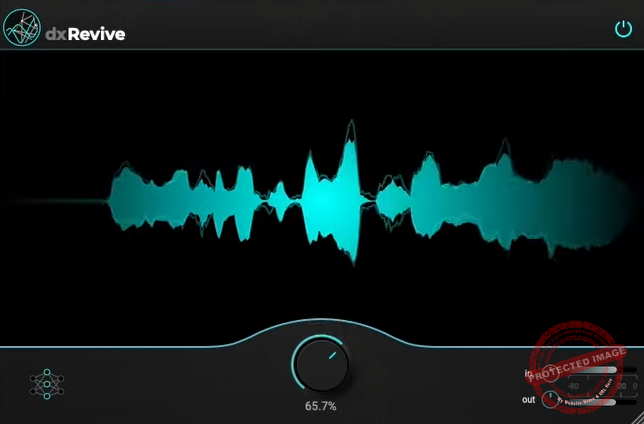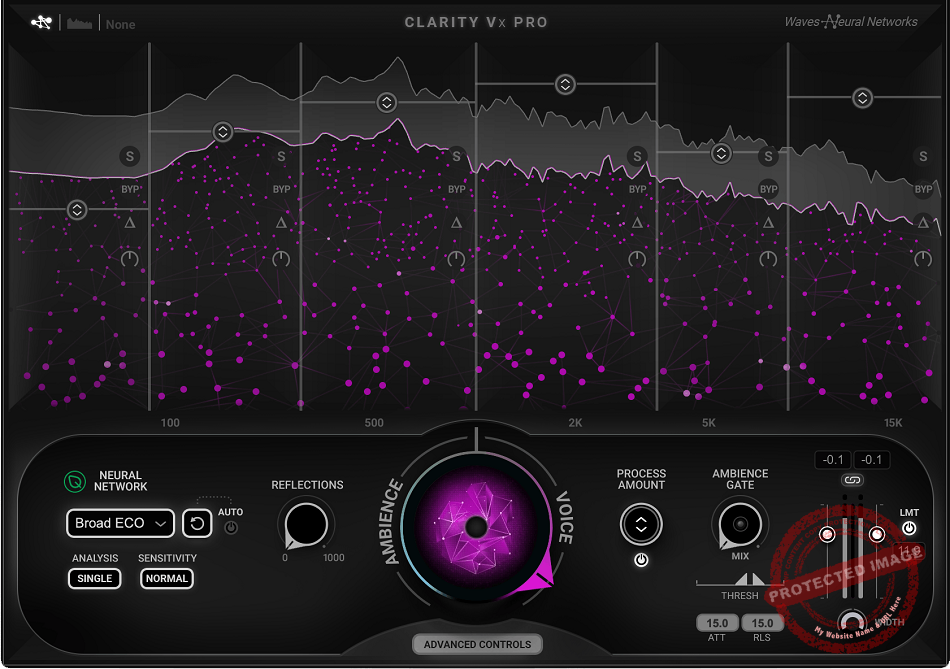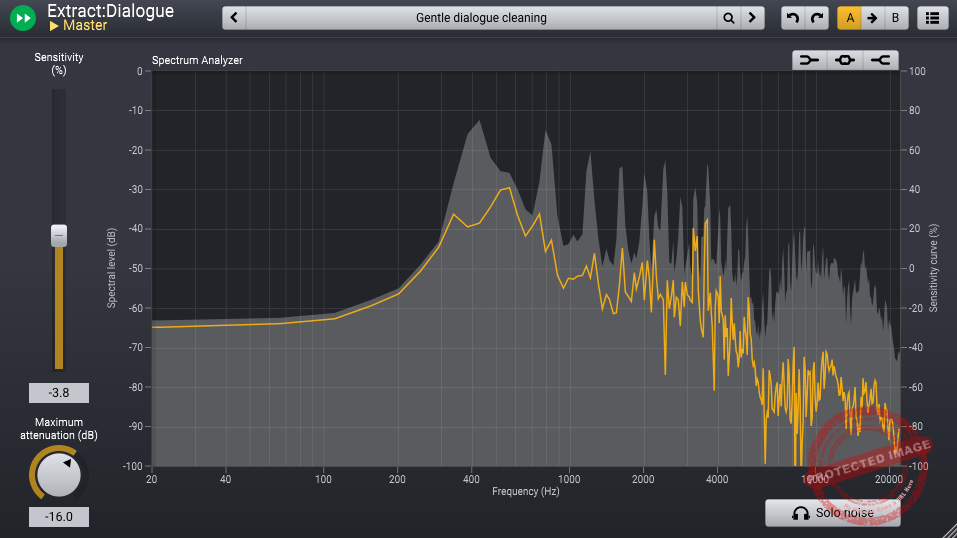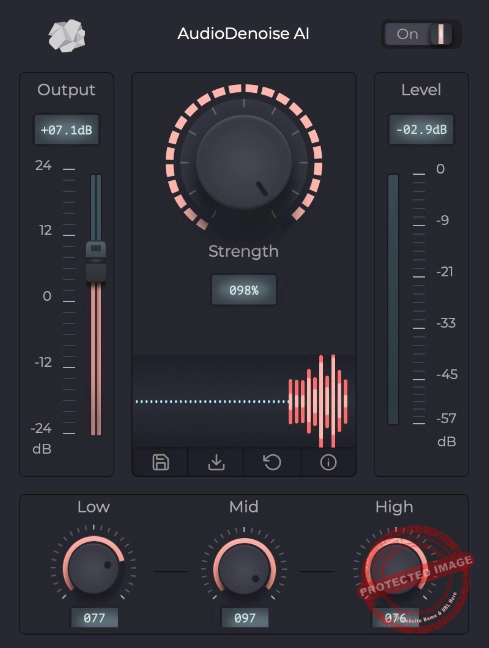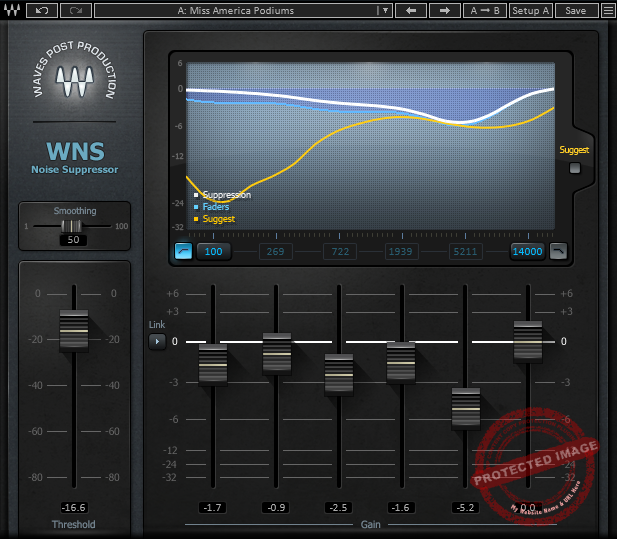Taming the noise in recordings is crucial for pro-sounding mixes. That’s why today we look at the 7 best Noise Reduction plugins to help you achieve studio-like sound.
In 2025, Noise Reduction has really advanced with AI and can turn home-recorded noisy vocals to sound straight out of a high-end recording room or studio. Studio work for voiceovers, vocal recordings, and tracking instruments has never been this accessible.
You need not necessarily go to a well-treated studio to get a decent sound for your recordings. Some of the tools I will be suggesting in this article can transform your noisy or roomy recordings into quiet, clean, professional ones. I will also declare my personal favorite within the article, but all these tools are really sophisticated and evolved.
Audio plugin companies have made it really easy for bedroom producers/artists with these newly developed noise reduction VSTs.
So let’s discuss the 7 best denoiser plugins, enjoy!
1. Supertone Clear
Designed with an intuitive interface and smile 3-knob workflow, Clear plugin can end your struggle with noisy or echo-filled recordings.
- 3-Knob Design
Whether you’re battling background noise, excessive reverb, or even need to isolate ambient sounds, Clear delivers solid results with just 3 knobs: Voice, Ambience, and Voice Reverb. For vocal cleaning applications, the Voice knob can make the vocals cut through more. Similarly, a quick tweak to Ambience or Reverb will fix the room noise or reverb.
- Straightforward Interface and Workflow
It is designed for producers or artists working with untreated rooms. Its split view lets you visualize how it separates the ambiance or noise from the original sound. Moreover, it doesn’t have any complicated menus, and there is no steep learning curve, just clear, clean audio in seconds.
- Real-Time Processing
Since I work remotely with some clients and stream or work live online, I love its real-time processing. You can hear the changes as you make them, so there’s no guessing about how your audio will turn out. It’s fast, accurate, and helpful.
- Neural Network Technology
Clear VST plugin utilizes neural network technology to isolate voices from background noise and reverb, and it does so with fine accuracy, leaving natural-sounding audio with minimal artifacts. You can use it in Mono or stereo modes and can turn on ‘Echo mode’ to minimize CPU load.
Post-production engineers, streamers, musicians, and video editors can all benefit from this versatile plugin. Whether you’re cleaning up podcasts, tweaking vocals, or streaming live, Clear plugin can help you a great deal with cleaning audio.
Supertone Clear works with DAWs or audio/video editing software that supports AU, VST3, VST, and AAX plugin formats and is compatible with Windows 10 and later (64-bit Only) and macOS 10.13 and higher operating systems. It works at 44.1, 48, and 96 kHz sample rates and supports Native Apple Silicon (m1, m2, m3).
2. Klevgrand Brusfri
Brusfri denoiser plugin gives you clean audio while maintaining the natural quality of the sound.
- “Learn” Button
Brusfri works like a gate plugin and utilizes a machine-learning algorithm to first understand the noise. That’s done by its “Learn” button, which is meant to recognize the background noise in isolation when turned on. You can feed this button a signal with just the ambiance or background noise, without the main signal or audio.
- Frequency-trimmed Expanders
Unlike many other noise reducers, it doesn’t rely on phase manipulation to suppress noise, which is a common method that often introduces squishy, robotic artifacts into your audio. Instead, Brusfri uses a series of frequency-trimmed expanders to intelligently identify and reduce unwanted sounds, keeping your audio intact and sounding natural.
I would suggest Brusfri for tackling basic noise issues, like hiss from cheap mics, fan hums, or light environmental noise. It excels at these simpler tasks, delivering cleaner, more polished audio for podcasts, voiceovers, or casual recording projects.
- Customization Controls
I also love its customizations. The attack, threshold, and lookahead controls can help you shape how it processes the audio and its noise.
Regarding complex or layered noise environments, I think this is not the best plugin to work with. Overlapping voices, dense audio, intricate soundscapes are hard for this plugin to process and fix as it adds some compression and decreases clarity in those cases.
Klevgrand Brusfri is compatible with macOS 10.10 or onwards (optimized for the M1 processor) and Windows 7 (SP1) or newer operating systems and works with DAWs or software that support AU, VST, or AAX plugin formats at 64-bit depth.
3. Accentize dxRevive
Unlike other restoration tools that simply filter out unwanted noise, dxRevive noise reduction vst plugin goes a step further by detecting and rebuilding missing frequencies, giving your recordings a professional touch no matter the source.
dxRevive covers a wide range of restoration needs, from removing noise and reverb to fixing audio that’s been affected by low-quality codecs (think Skype or Zoom calls).
- Tackles Many Issues Simultaneously
One of the things I love about this plugin is how it tackles so many issues in one go. It cleans up background noise, suppresses reverb, and even fixes audio that’s been damaged by bad compression. It’ll also recover clipped audio and handle things like phone call recordings with ease.
- The Studio Algorithms
The “Studio” algorithms are the core of this plugin. Whether you’re using the regular version or the dxRevive Pro, these algorithms work magic on your audio.
They remove unwanted noise and reverb while applying EQ and spectral resynthesis to give you that polished, professional sound you’d expect from a high-end studio. The Pro version even comes with the “Studio 3” algorithm, which seems even more evolved.
- EQ Restore algorithm
Another feature that’s been really helpful is the EQ Restore algorithm. It doesn’t mess around with the background noise like traditional EQs do. Instead, it focuses on enhancing the speech itself, leaving the natural ambiance intact.
This really works for me because I don’t want to lose the character of a voice just to get rid of some hum in the background.
Moreover, its processing happens locally, so there’s no waiting around for uploads or worrying about sending sensitive audio data to the cloud. It’s fast and efficient, and the plugin handles everything in real-time.
Plus, it’s multilingual, so no matter what accent or language your recording is in, dxRevive handles it easily.
- Single-knob Workflow
For content creators and podcast editors, the single-knob workflow makes it super easy to restore audio quickly. But if you’re in post-production like me, the Pro version gives you some serious tools. Features like the “Retain Character” and “Natural Sound” algorithms, plus the ability to fine-tune frequencies with Spectral Focus mode, can be a big help when working on more complex projects.
I must say that this unit can be a bit CPU-heavy in some cases, especially when working on large projects. In newer machines like Apple M-series, this is not even a minor issue, but for other machines, my recommendation would be to use offline rendering mode.
Accentize dxRevive supports 44.1kHz, 48kHz, 88.2khz, 96kHz, and 192kHz sample rates and works in stereo and mono modes in VST3, AU, and AAX plugin formats, being compatible with both Mac and Windows OS.
4. Waves Clarity Vx Pro
Clarity Vx Pro uses AI-powered noise reduction plugin to instantly clean up voice recordings, delivering crisp, artifact-free results in real time.
You can edit and mix dialogue within your DAW, with all video and audio tracks playing simultaneously, which keeps everything in context and streamlines the process.
- Multiple Bands
Clarity Vx Pro denoiser plugin has multiple bands, with options like process amount, solo, delta, bypass, and pure gain adjustment, plus VCA control for total flexibility. And if you’re dealing with tough scenes or multiple takes, you can automate your settings so everything stays consistent.
This has been my preferred unit for working with vocals as the high-sensitivity ambiance detection” preset creates wonders. In just a few steps, the vocals are transformed to a clean mix and the output quality is always satisfying without any loss in frequency sense.
- 4- and 6-band Workflows
For even more control, Clarity Vx Pro offers 4- and 6-band workflows.
The 6-band option brings precision over controlling different frequency ranges in order to fine-tune the noise reduction. For working on clean dialogues or fixing the noise in complex environments, this is a great feature to target specific bands, making this one my favorite among others on the list.
I’ve used it in situations where the audio was practically unusable, like when I recorded in a huge, noisy room with machinery running in the background and terrible acoustics. For dialogue, voiceovers, or podcasts, it’s a no-brainer.
However, this noise reduction VST plugin is quite heavy, and sometimes the audio exports take hours, especially for longer recordings.
Waves Clarity VX Pro is compatible with macOS Monterey 12, Ventura 13, Sonoma 14, Sequoia 15, and Windows 10/11 operating systems and is available in VST2/3, AU, and AAX plugin formats.
5. Acon Digital Extract:Dialogue
You can use Acon Digital’s Extract:Dialogue denoiser VST as your go-to clear audio plugin, making it incredibly useful in post-production.
I’ve used Extract:Dialogue on projects with background noise like wind, traffic, and hums, and it has consistently provided clean, usable dialogue with minimal effort. The plug-in works automatically, distinguishing between dialogue and common noise without much need for user intervention.
- Phase Correction
The highlight of version 1.5 is the Phase Correction function, as it helps in resolving phase distortions and destructive interference, especially for the noise overlaps between the dialogues in the same frequency range. This way, you can achieve more natural-sounding speech, even if there is complex noise.
- Spectrum Analyzer and Sensitivity Slider
Some other great features of the unit are the spectrum analyzer and the sensitivity slider , as they help the workflow and adjust the noise detection for different frequencies.
You can tweak up to 3 frequency bands, giving you more control over how the plug-in handles specific types of noise. The automatic noise reduction is solid, but you also have enough flexibility to fine-tune settings if needed.
- Improved Neural Network Model
Version 1.5 also includes an improved neural network model, which enhances noise reduction while keeping the dialogue clear and natural.
The plug-in is efficient and has low CPU usage, making it suitable for larger projects or real-time applications. You can also listen to its samples here.
Acon Digital Extract:Dialogue is compatible with both Windows and Mac, offering VST, VST3, AAX, and AU formats. It supports both 32-bit and 64-bit versions on Windows and runs natively on 64-bit Mac systems, including ARM-based Apple M1/M2 processors.
6. Crumplepop Audio DeNoise AI
Audio DeNoise AI is a highly intuitive noise reduction plugin that provides a straightforward solution for cleaning up audio without requiring prior sound editing experience.
- Simple Interface
DeNoise AI‘s simple interface, featuring only a few knobs and sliders, makes it accessible to beginners while still being effective for more experienced users.
- AI-driven algorithm
The AI-driven algorithm works well for eliminating mild to moderate background noise, such as hums, fan noise, and rustling, by precisely identifying and reducing unwanted sounds.
- Basic Controls
You get the main ‘Strength’ knob for adjusting the intensity of the noise reduction, two sliders for input and output volumes, and knobs for noise reduction for low, mid, and high-frequency bands.
Although it’s not as suitable for real-time processing due to potential latency, Denoise AI is a fantastic tool for offline vst noise reduction, preserving the quality of vocals.
Crumplepop Audio DeNoise AI is compatible with AAX, AU, and AAX plugin formats and is compatible with both Windows and Mac operating systems.
7. Waves WNS
Designed specifically for dialogue processing, WNS is a great noise reduction VST unit for post-production work in film, TV, or any other media involving speech.
- Real-Time Noise Suppression
It utilizes real-time noise suppression, which works without the need to analyze a noise profile beforehand. With 6 adjustable bands, this denoiser plugin allows you to isolate and reduce noise across different frequency ranges.
This makes WNS effective for tackling hums, fans, wind, or any continuous background noise that interferes with dialogue clarity.
- Manually Adjustable Bands
I love that it allows you to manually adjust each band for fine-tuning the reduction process in challenging environments, like noisy outdoor scenes or crowded soundscapes.
What I really enjoy about WNS and find particularly useful, is its ability to apply noise suppression in real-time.
- Simple yet Efficient Design
Whether working on live broadcasts or during post-production, this VST noise reduction plugin is incredibly efficient and capable of reducing large amounts of background noise without creating unwanted artifacts. It performs well without coloring or processing speech, ensuring that dialogue remains clear and intelligible.
While WNS doesn’t offer advanced features like AI or neural network-based noise reduction, its simplicity and reliability make it a favorite for working in fast-paced production environments.
High CPU efficiency and a clear interface also add to its appeal. However, for more sophisticated noise reduction needs or complex audio issues (e.g., overlapping dialogues), other plugins on this list may offer more precise control.
Waves WNS is compatible with VST, AU, and AAX plugin formats and runs on both Windows and macOS.

Berk Öztuna, a musician from Istanbul, is skilled in handpan, percussion, and guitar, performing and recording his own compositions globally. With expertise in music production and audio technology, he integrates virtual instruments and sound design tools seamlessly into his work. He also writes insightful articles on music production and gear for platforms like Plugin Noise and shares his music on Spotify and Instagram.
DONATE: Love our content? Help us keep Plugin Noise alive in the age of AI — Your donation fuels better content for music creators like you! You can donate here: pluginoise@gmail.com (Every amount counts.)

